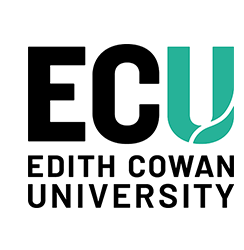Document Type
Report
Publisher
Western Australian College of Advanced Education
Place of Publication
Nedlands, Western Australia
School
Department of Education Studies
Abstract
Curriculum awakeners:
Definitive statements· by Newsom, 1948; Cooper, 1968; Green 1976; Sutherland 1981; and Parker & Offer 1989, have had a profound influence on the orientation of Part 2 of my report on the "Curriculum for Girls" in Australia over the past twenty two years.
John Newsom, (1948) A quotation which made a deep impression on me was that of Newsom:
"and so the great work goes on, wrote John Newsom of British girls' grammar schools in 1948, " ... and we produce little parrots, who can tell you the Main Clauses in the Treaty of Utrecht or give you in a hundred words a thumb-nail sketch of poor Shylock, who can solye a quadratic equation, but the integration of whose personalities has been deliberately retarded" ( Benn 1970:16).
We should, according to Newsom, be concerned not only in transforming girls from being reproductive learners into productive creative learners, but, also, with actively enhancing their personalities. These two major goals I believe, from an extensive review of the literature, are inextricably linked.
Nance Cooper (1968). Twenty one years later in Australia, Newsom 's ideas resurfaced in a definitive paper by Nance Cooper on "The Education of Women" where she stated:
"At no time has. any educational reformer in this country consciously sat down and thought through to a scheme of education that would enable girls, as girls, to really reach full intellectual and emotional maturity with the least possible suffering". (Cooper, in McLean 1969).
It was she who produced vital statistics relating the education of girls to their economic situation and the attitudes that prevailed against their achievements at school and into adulthood.
Maxime Green (1976): writing from the American perspective, in the mid seventies, saw the need for women and girls to be actively involved in determining their own destinies and how with growing confidence and competence, individually and collectively, this was beginning to be achieved:
"The old separations still exist, as do many of the old inequities. They are being eroded now, as the consciousness of women changes and having changed seeks out expression in the public space ... there are new choices to be made by individual women and by women in their networks and associations. There is a new generation of women rising, a new generation that must be moved to critical reflection upon their own situations so that they may achieve their own awakenings". (Green, 1976:29).
Margaret Sutherland (1981) in her book Sex Bias in Education made a pertinent comment with regard to the education of boys in Britain:
"It would be unreasonable to suggest that changes are to be made only for the benefit of girls' education. From what has been said so far it emerges that boys also are far from receiving the ideal education" (Sutherland 1981:201-204)
Lesley Parker and Jenny Offer, (1989) made the statement that innovations in the Science Curriculum for Girls have much to contribute to the science curriculum for all students, reflecting a growing confidence in the value of the women's perspective and women's ideas for true gender inclusive curriculum.
"For some years now science education in relation to girls has been a focus of American, British and European research. While initially the concern was with the importance of science to girls, more recently the emphasis has shifted somewhat to examine also the importance of girls to science" (Parker & Offer 1989:918).


Comments
Newhouse, L. (1990). Gender equity : retrospect and prospect, with recommendations for the School of Education: part 2: a curriculum for girls. Nedlands, Australia: Western Australian College of Advanced Education.